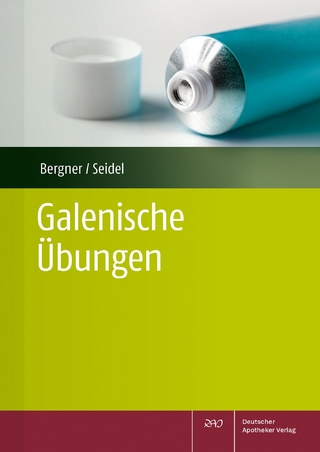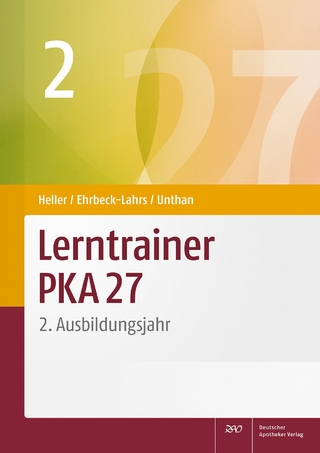
Therapeutic Applications of Honey and its Phytochemicals
Springer Verlag, Singapore
978-981-15-6801-5 (ISBN)
This book provides evidence-based information on the pharmaceutical potential of honey along with its therapeutic applications and precise mechanisms of action. It discusses in detail the phytochemistry and pharmacological properties of honey, highlighting the economic and culturally significant medicinal uses of honey and comprehensively reviewing the scientific research on the traditional uses, chemical composition, scientific validation, and general pharmacognostical characteristics. Given its scope, it is a valuable tool for researchers and scientists interested in drug discovery and the chemistry and pharmacology of honey.
Muneeb U Rehman (Ph.D.) is a faculty member at King Saud University, Riyadh, Saudi Arabia. He holds a doctorate in Toxicology (specialization in cancer biology and natural product research) from Jamia Hamdard, New Delhi, India Dr. Rehman has more than 10 years of research and teaching experience in the field of toxicology, biochemistry, cancer biology, natural product research and pharmacogenomics. He is the recipient of several national and international fellowships and awards. He has published 75 research papers in peer-reviewed, international journals, and 24 book chapters. Dr. Rehman is an on the editorial boards and is a reviewer of several high-impact, international scientific journals. He is also a life member of various international societies and organizations. Currently, Dr. Rehman is engaged in studying the molecular mechanisms of cancer prevention by natural products and the role of pharmacogenomics and toxicogenomics in evaluating the effectiveness and safety of drugs. Sabhiya Majid, Ph.D. is a Professor and Chairperson of the Department of Biochemistry, Govt. Medical College Srinagar (GMC Sgr.), J&K, India. Prof. Majid has 30 years of experience in teaching, research and diagnostic biochemistry, having published around 100 research papers in journals of repute, 3 books and 12 book chapters. She has been the recipient of several fellowships, awards and grants from various reputed funding agencies. She has been the nodal officer and implemented various research and infrastructure development schemes including Fund for Improvement of Science & Technology Infrastructure, Department of Science & Technology, Govt. of India. She is a member of several scientific associations and boards of undergraduate, postgraduate and research studies. She is on the reviewer panel of a number of online peer-reviewed journals. Having moved on from her doctoral work on nutritional modulation of carcinogenesis to understandingthe molecular basis of various disease processes, her current research focuses on non-invasive cancer markers.
Chapter 1. Brief History and Traditional Uses of Honey.- Chapter 2. Honey: A Powerful Natural Antioxidant and its Possible Mechanism of Action.- Chapter 3. Honey and its Phyto-constituents: From Chemistry to Medicine.- Chapter 4. Honey: A Sweet Way to Health.- Chapter 5. Validation, Chemical Composition, Stability of Honey from Indian Himalayas.- Chapter 6. Honey of Authenticity: An Analytical Approach.- Chapter 7. Honey and its Derivatives: A New Perspective in its Anti-Microbial Activities.- Chapter 8. Traditional and Modern Applications of Honey: An Insight.- Chapter 9. Recent Advances in the Discovery of Bioactive Components from Natural Honey.- Chapter 10. Honey: Types, Composition and Anti-microbial Mechanisms.- Chapter 11. Honey as Component of Diet: Importance and Scope.- Chapter 12. Positive Influence of Honey on Human Health.- Chapter 13. Different Types of Honey and Their Properties.- Chapter 14. Pharmaceutical Applications of Honey.- Chapter 15. Properties of Honey: Its mode of Action and Clinical Outcomes.- Chapter 16. Chinese Honey Composition, Production, Trade and Health Benefits.- Chapter 17. The Gut Brain Axis, Cognition and Honey.- Chapter 18. Anti-proliferative and Apoptotic Activities of Natural Honey.- Chapter 19. Heath Benefits of Phenolic Compounds in Honey: An Essay.- Chapter 20. Role of Honey for Enhancing Performance in Endurance Sports.
| Erscheinungsdatum | 29.12.2021 |
|---|---|
| Zusatzinfo | 42 Illustrations, color; 44 Illustrations, black and white; XIII, 399 p. 86 illus., 42 illus. in color. |
| Verlagsort | Singapore |
| Sprache | englisch |
| Maße | 155 x 235 mm |
| Themenwelt | Medizin / Pharmazie ► Pflege |
| Medizin / Pharmazie ► Pharmazie ► PTA / PKA | |
| Naturwissenschaften ► Biologie ► Biochemie | |
| Naturwissenschaften ► Chemie ► Organische Chemie | |
| Naturwissenschaften ► Chemie ► Technische Chemie | |
| Technik | |
| Schlagworte | Anti-cancer • Antioxidants • honey • Human health • pharmacology • Phyto-chemicals |
| ISBN-10 | 981-15-6801-4 / 9811568014 |
| ISBN-13 | 978-981-15-6801-5 / 9789811568015 |
| Zustand | Neuware |
| Informationen gemäß Produktsicherheitsverordnung (GPSR) | |
| Haben Sie eine Frage zum Produkt? |
aus dem Bereich


